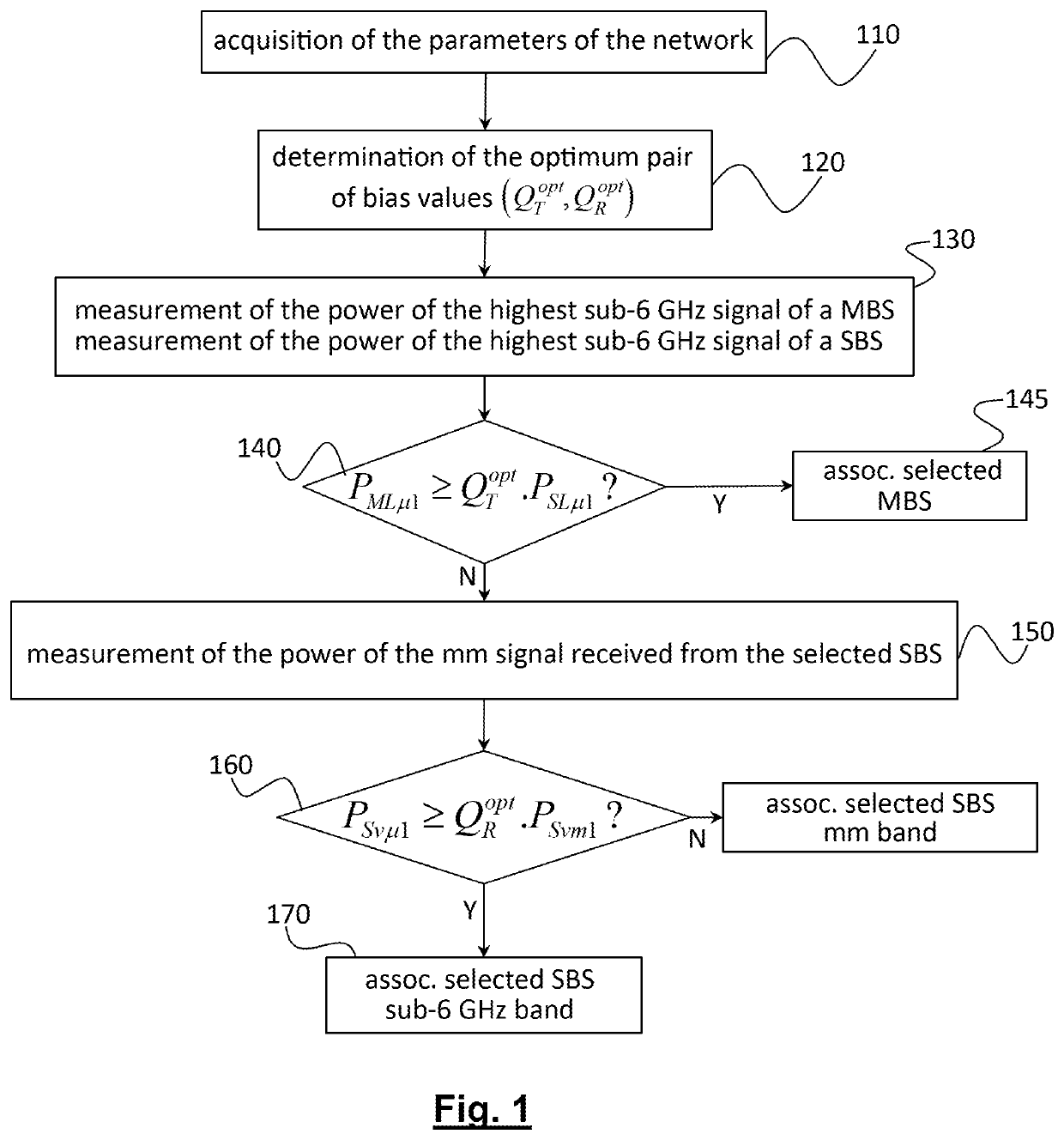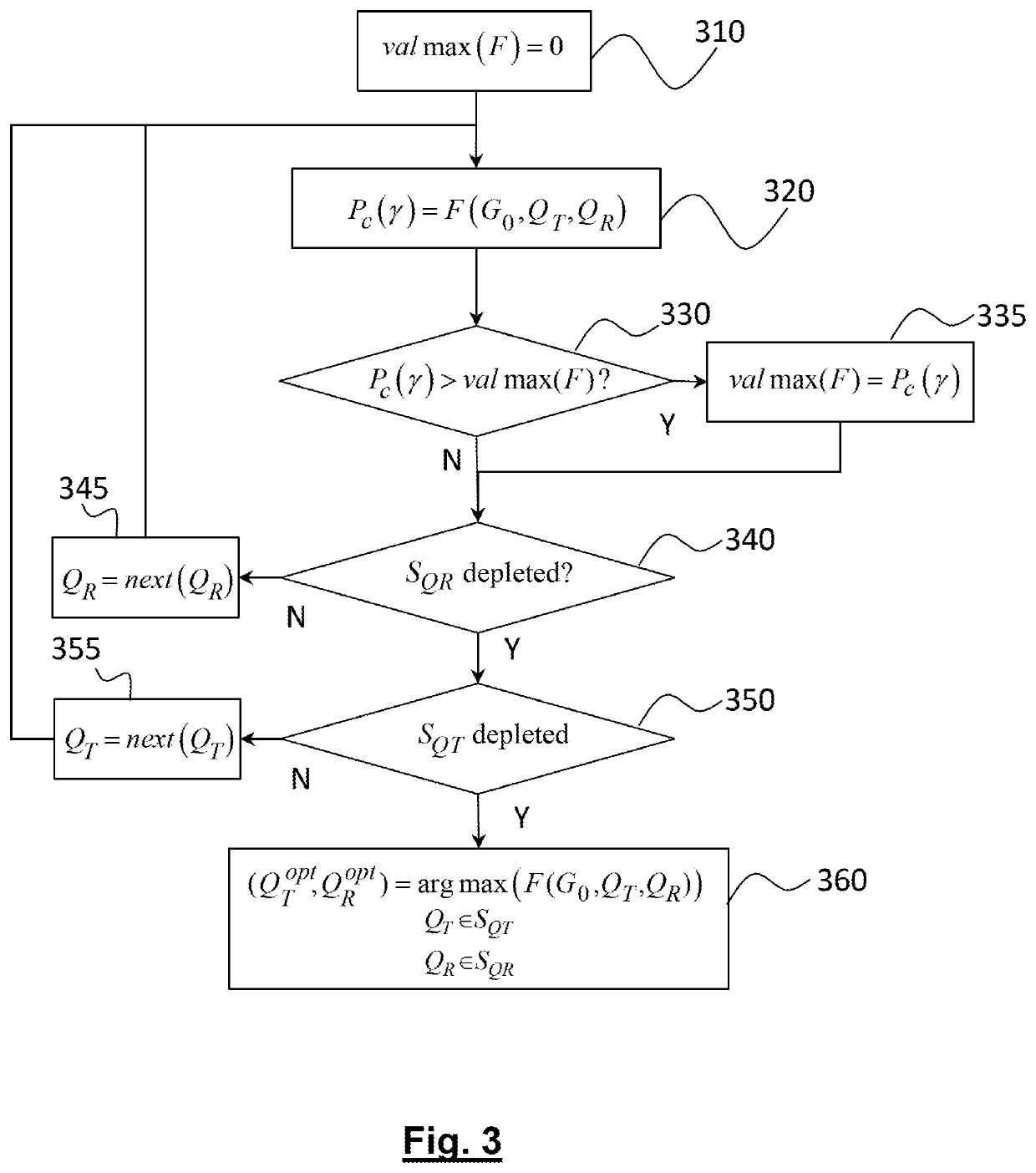Method for distributing a load in a multi radio access technology heterogeneous network
a multi-radio access technology and heterogeneous network technology, applied in the direction of network traffic/resource management, digital transmission, data switching network, etc., can solve the problem of complex strategy for distributing traffic load between mbss and sbss
- Summary
- Abstract
- Description
- Claims
- Application Information
AI Technical Summary
Benefits of technology
Problems solved by technology
Method used
Image
Examples
Embodiment Construction
[0035]It shall be considered in what follows a multi radio access technology heterogeneous cellular network. Without loss of generality, it shall be supposed that the network comprises two types of cells: macrocells (served by base stations MBSs) operating in the sub-6 GHz band (i.e. from 0.7 to 6 GHz) and minicells, also referred to as small cells, (served by base stations SBSs) operating both in this sub-6 GHz band (or in a band that is not separate from the latter) and in the millimeter band (25 to 300 GHz).
[0036]The principle at the base of the invention is to use a first bias value, QT, in order to select the cell tier (macrocell or minicell) that will serve the terminal and a second bias value, QR, in order to select the radio access technology in the case where the terminal is located in a coverage zone of a minicell.
[0037]More precisely, FIG. 1 diagrammatically shows the flowchart of a method for distributing loads in a multi technology heterogeneous cellular network, accord...
PUM
 Login to View More
Login to View More Abstract
Description
Claims
Application Information
 Login to View More
Login to View More - R&D Engineer
- R&D Manager
- IP Professional
- Industry Leading Data Capabilities
- Powerful AI technology
- Patent DNA Extraction
Browse by: Latest US Patents, China's latest patents, Technical Efficacy Thesaurus, Application Domain, Technology Topic, Popular Technical Reports.
© 2024 PatSnap. All rights reserved.Legal|Privacy policy|Modern Slavery Act Transparency Statement|Sitemap|About US| Contact US: help@patsnap.com










